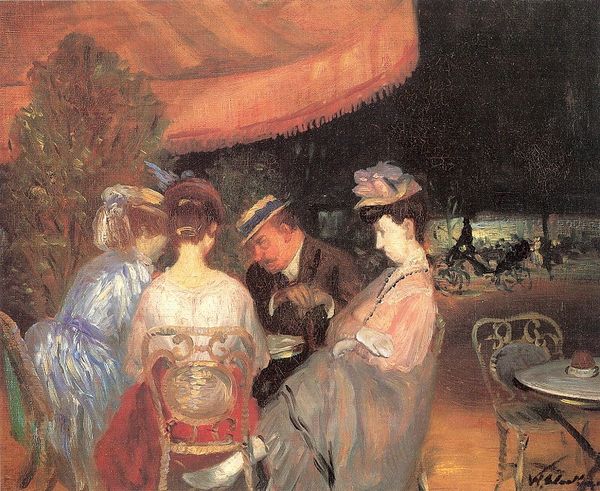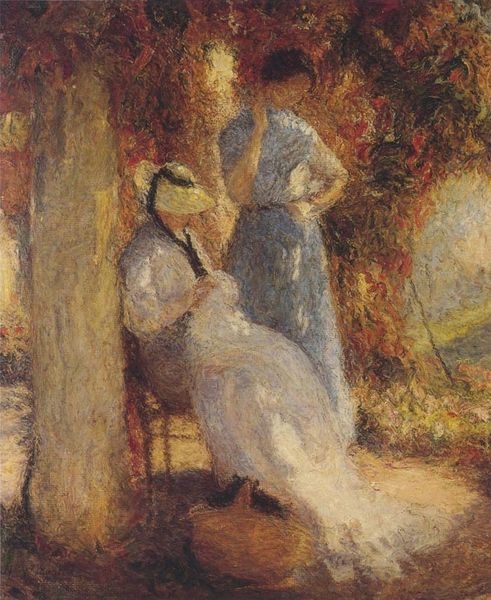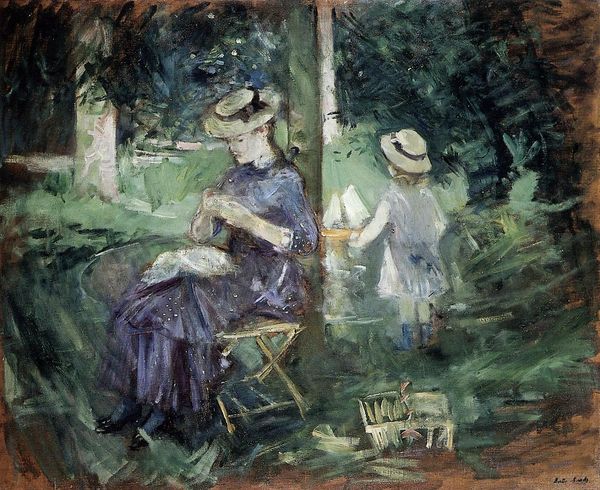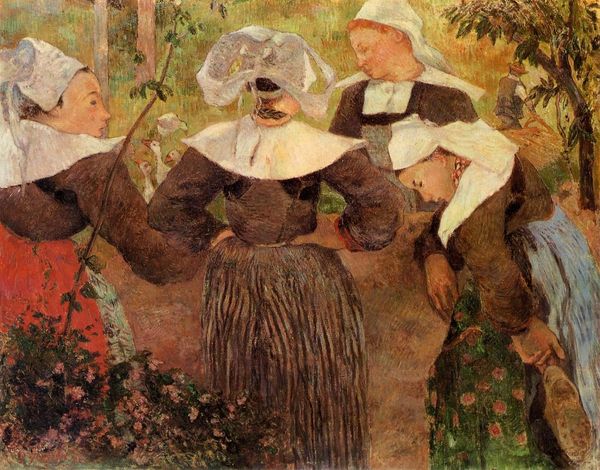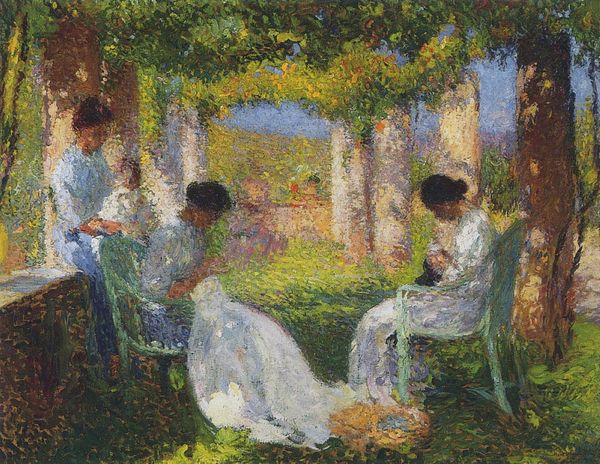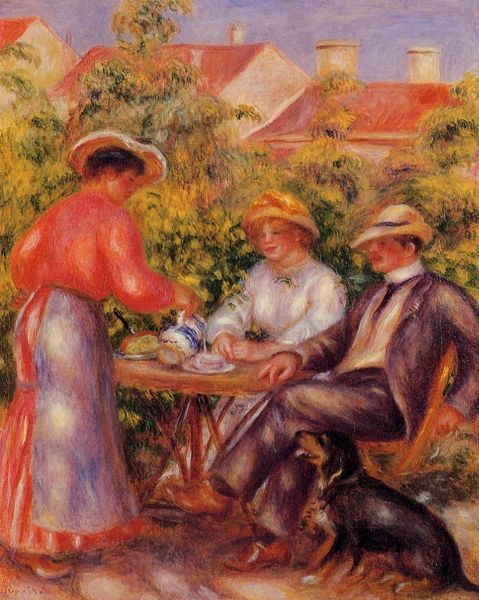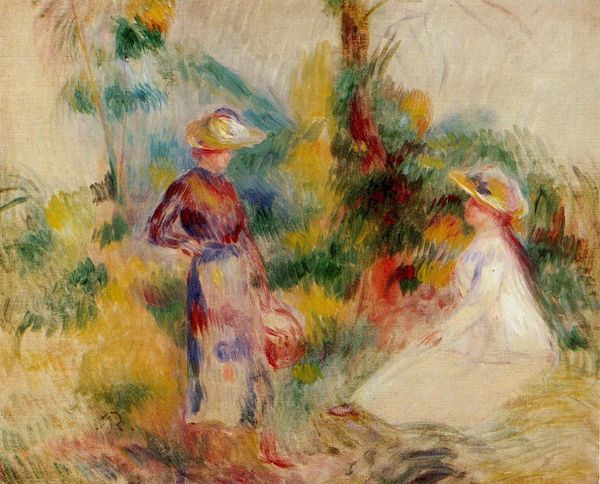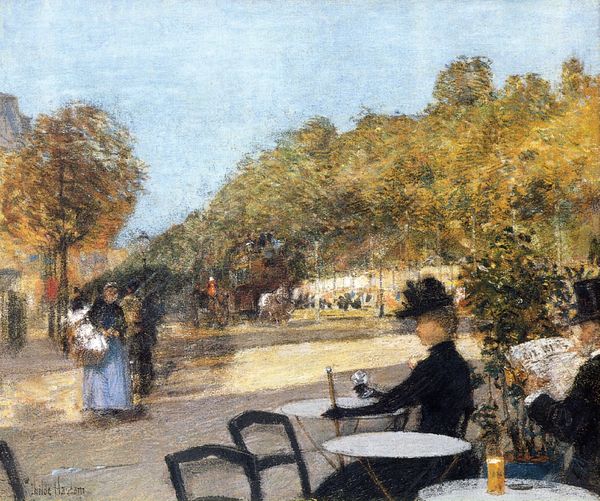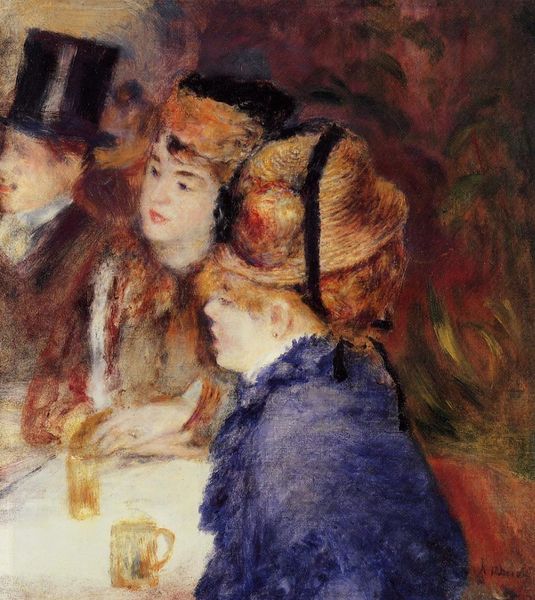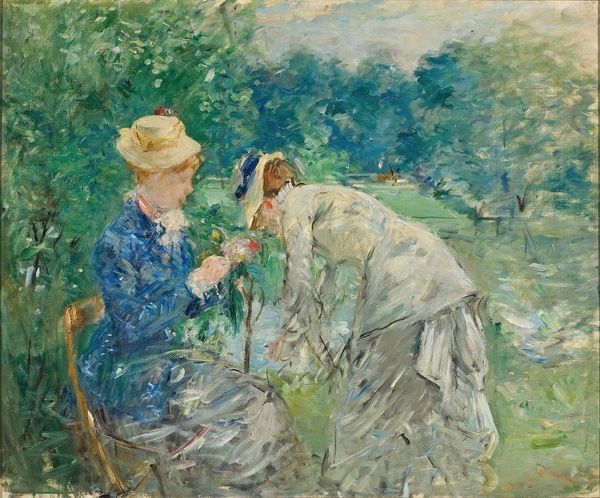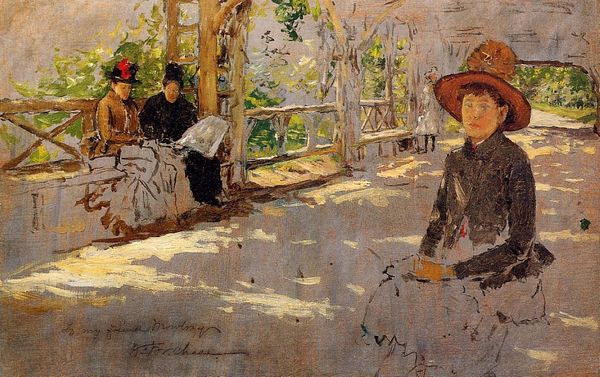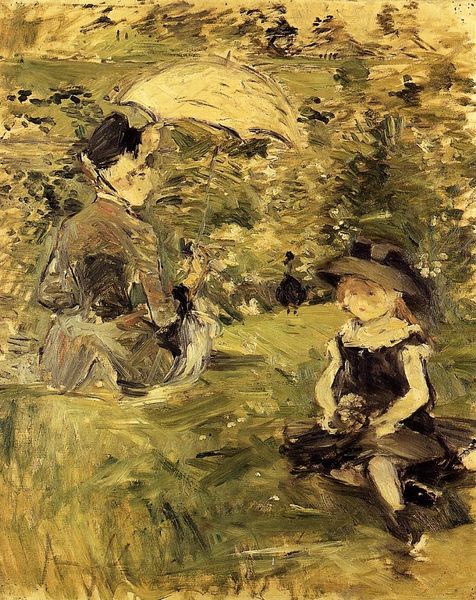
Copyright: Public domain
Curator: Ah, Renoir's "In the Garden," painted in 1876. A classic example of his Impressionistic style. Editor: My first thought? A shimmering puzzle. It’s all light and dappled shadows, like trying to recall a summer afternoon from a dream. The figures almost dissolve into the foliage! Curator: Indeed. Notice how Renoir uses short, broken brushstrokes to capture the fleeting effects of sunlight filtering through the leaves. The composition itself is rather complex, creating a sense of depth and spatial ambiguity. Observe the contrast between the sharply defined figure in the foreground, poised to join the gathering, and the more loosely rendered group seated at the table. Editor: I feel that. It's like, are they gossiping, philosophizing, falling in love? Or all of it happening at once? And the woman in the striped dress is pure motion; that dramatic swoop! A dark, elegant form amidst all the casual chaos. Almost as if the narrative centers on her anticipated appearance... What do you make of the interplay of artificial and natural forms? The table setting juxtaposed against wild nature creates such tension for me! Curator: It is a potent contrast. The man-made versus the natural… Consider, the geometric stability of the table grounds the painting, acting as a counterpoint to the organic exuberance of the surrounding garden. This structured element underscores themes of human presence. Renoir is setting out the scene where society and natural settings mingle—though perhaps precariously. The surface complexity also generates an intellectual puzzle to unravel and process, yes? Editor: Exactly, the painting holds its secrets beautifully. The colors alone... it is very dream-like. Curator: The vibrant palette – greens, yellows, blues – serves to enhance the atmospheric quality of the scene. Renoir avoids strong, dark outlines. It gives "In The Garden" this quality of captured reality. It presents a scene on the verge of dissolution. It is a transient moment... captured in paint. Editor: Makes you wonder, what was Renoir hoping to evoke with the painting? A snapshot of the ephemeral beauty of youth, of summer itself, and these gentle gatherings, soon lost forever to the flow of time? Curator: Perhaps precisely that! That the true meaning resides in our own ability to analyze, not only perceive what has already occurred. Editor: Well put! It seems we are all invited to have a glass with them.
Comments
No comments
Be the first to comment and join the conversation on the ultimate creative platform.
